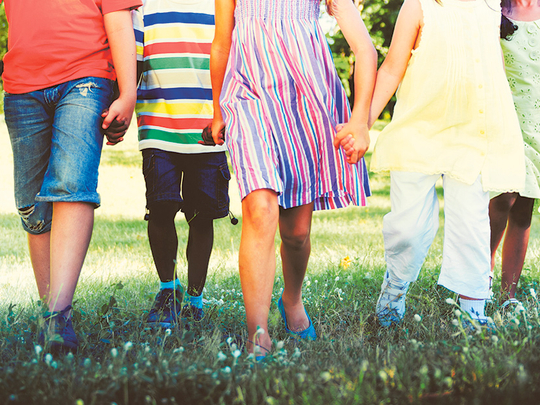
London: A recent study suggests we need to spend 90 hours with someone before we can begin to consider them a friend. And how did this conclusion come about?
The report in the Journal of Social and Personal Relationships by Jeffrey Hall, associate professor of communication studies at the University of Kansas, lays out the numbers for us. He analysed 355 people and worked out how long it took them to graduate from acquaintance, to casual friend, then friend, and close friend.
On average it takes 50 hours to trade up from acquaintance to casual friend - the sort of people you are glad to see across a room at parties; 90 hours is the tipping point where you start to carve out time to see one another; and when you get to 200, you’re proper intimates, you see each other often socially and support each other emotionally.
Hall’s study was inspired by the work of Dr Robin Dunbar, the University College London anthropologist who in 1992 published a paper that said the number of meaningful relationships we can have in our lives is around 150, known as Dunbar’s Number. He divided this into groups of five close friends, 15 good friends, 50 general acquaintances, building to a larger circle limited to around 150 (our capacity to limit ourselves to this number is all down to the size of the brain’s neocortex, science fans).
Research also shows that we reach peak friends when we’re about 25 years old and the numbers drop off after that. That’s the age when we gather around us friends from school and university, from first jobs and from settling into our adult lives. It’s hardly surprising that we make the most friends when we’re trying to work out who we are and are still trying on different lives for size.
When I was a student I had a friend, a grad student, who seemed so much wiser and more sophisticated than the rest of us, possibly because he was three years older. While we were all so sure we were going to be best friends forever, he posited that most of us were geographical friends, close only because of shared bathrooms.
It seemed quite damning at the time, but of course it’s natural for some friendships to fall away. Cheerfully though, if we believe in Dunbar’s Number, that just makes room for new people to come into our lives. It can be more difficult to make friends as you get older, because our lives are busier and perhaps we are more rigid in what we expect from those around us.
The essential formula for friendships of all kinds is spark plus proximity plus time. What we seek in our friends - loyalty, thoughtfulness, a generosity of spirit, and the ability to make us laugh - is also what can make a good acquaintance, too.
“She’s an acquaintance,” sounds so dismissive, so withering, and yet our acquaintances can certainly add a sprinkling of happiness and belonging to our everyday lives too. Having five close friends is riches indeed, but sometimes a nod of recognition across a crowded post office or a friendly chat in the supermarket queue can add to the cheerfulness of our days.
Our friends are the people who make us feel like the very best versions of ourselves, funnier, cleverer, more interesting. And it really is never too late to make a new one.
YOUR TOP FIVE FRIENDS
These are the people you can call after the 10 o’clock news if you need to. They’re there to catch your bouquet, drive you to the hospital, bail you out and pass you a tissue for the ugly crying. They’ve seen you at your worst and yet there they still are, cheering you on when you’re at your best. They’ll stand up for you, even when you’re wrong (though they might want a quick word). They’re the first people you call when something wonderful or something terrible happens. They know your family, possibly more than one generation of your family, and the names of your childhood pets. You might spend Christmas together.
YOUR TOP 15 FRIENDS
These are the people who, even if you don’t speak for months, you pick up where you left off as though you just spoke yesterday. You might spend Easter together, or go on holiday together. You’re au fait with one another’s musical tastes, favourite books and restaurants and - just to be modern - food intolerances. You know the names of each other’s pets.
YOUR TOP 50 FRIENDS
Because of Facebook and other forms of social media, you probably know more about your top 50 than you might have done in a previous generation. You know the names of their children, their birthdays, where they go on holiday and what they think about the new Doctor Who.
These are the surprise guests at the table, the ones you throw in to the mix with your closer friends to liven things up a bit. You don’t necessarily make special plans to see them, but your heart lifts a bit when you see them across a crowded room. With a little effort, they might be promoted to either of the other two groups should a vacancy arise.











